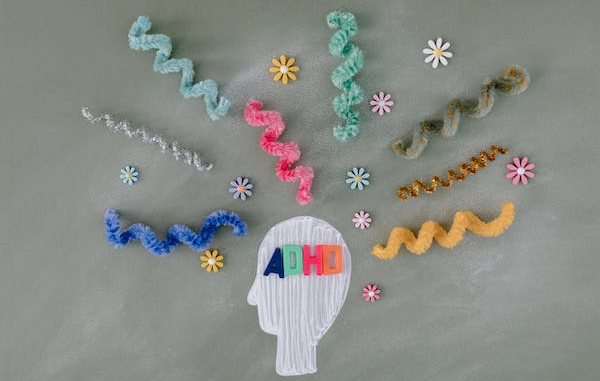
Did you know – almost 11 million people in the USA are currently living with ADHD? And, the number, for some reason, is expected to grow even more in the upcoming future.
And, the problem is – there’s no proper treatment available for it. But, yes, if you want, you’ll be able to treat it and keep the symptoms in check. And, we’ll talk about it here too.
However, before we do that, let us focus on something more specific…
What is ADHD?
So, let’s address the abbreviation, first.
The term “ADHD” refers to Attention-Deficit/Hyperactivity Disorder. It’s a brain-related condition that can make it hard for people to focus, control their impulses, and be still.
So, basically, even if you don’t want to, you’ll keep moving, tossing, and turning. You’ll also get distracted easily, losing focus from what you were doing previously.
Some symptoms of it may look like the following –
- This means having a hard time staying focused on tasks, especially if they’re not very interesting or stimulating.
- Some people with ADHD may be very energetic and have a tough time sitting still. They might feel like they need to move around a lot.
- People with ADHD might forget to do things or lose track of items more often than others. And it’s primarily more common amongst teenagers and young-adults.
- Trouble keeping things in order, like messy rooms or losing things frequently.
- Sometimes it’s hard to listen carefully and follow directions.
- Getting lost in thoughts and having a hard time staying on task.
Note: It’s important to remember that having ADHD absolutely doesn’t mean you’re not smart or talented. Lots of amazing and successful people have ADHD. It just means your brain works a little differently, and there are ways to manage it and use it to your advantage!
How to Take Care of Your ADHD Symptoms?
Living with ADHD (Attention-Deficit/Hyperactivity Disorder) can present unique challenges, but it’s important to remember that you’re not alone. With the right strategies and a bit of patience, you can effectively manage your symptoms and lead a fulfilling life.
Let’s learn more about it.
1: Establish Routines
Routines are your best friend when it comes to managing ADHD.
So, make sure to start working on creating a daily schedule and stick to it as much as possible. It’ll provide structure and predictability, which can help reduce feelings of overwhelm.
2: Use Visual Aids
Visual aids, such as calendars, reminders, and to-do lists on your phone, might be quite helpful for a person with ADHD. They provide a clear visual representation of your tasks and help you stay organized. However, young people might not want to use it at all.
So, in that case, you, as a parent, have to make them understand how it will benefit them. But, if they are still denying to use it, seeking professional help might be more useful for you.
3: Break Your Tasks into Much Smaller Steps
Large tasks can feel daunting, so break them down into smaller, more manageable steps. This makes it easier to stay focused and track your progress.
Also, once a work is done, you can note it down in a piece of paper or your diary. This way, it will be easier for you to remember what you’ve already completed and what’s left to be done.
3: Minimize Distractions
Identify your biggest distractions and take steps to minimize them.
This might mean finding a quiet workspace, using noise-canceling headphones, or using website blockers to limit time on distracting websites.
However, if you’re working in a professional environment, we’d ask you to talk to a senior or a member of the organization before you use a website blocker.
4: Utilize Time Management Tools
Apps and tools designed for time management can be a game-changer in this regard for you. So, consider using apps like Trello, Focus@Will, or Forest to help you stay on track.
5: Embrace Mindfulness and Meditation
Practicing mindfulness and meditation can help calm a racing mind. Even a few minutes a day can make a significant difference in your ability to focus and manage your symptoms.
6: Exercise Regularly
Physical activity is a powerful tool for managing ADHD. It helps release excess energy and boosts dopamine levels in the brain, which can improve focus and concentration.
7: Prioritize Self-Care
Taking care of your physical and mental well-being is crucial. Get enough sleep, eat balanced meals, and make time for activities that bring you joy and relaxation.
8: Seek Support and Community
Connect with others who understand what you’re going through. Joining support groups or online communities can provide a space to share experiences, tips, and encouragement.
9: Set Realistic Goals
Be kind to yourself and set realistic expectations. Celebrate small victories, and remember that progress is a journey, not a destination.
10: Use Tools for Memory
ADHD can sometimes affect short-term memory. Use tools like post-it notes, voice memos, or digital apps to help you remember important tasks and information.
11: Practice Patience and Self-Compassion
Living with ADHD can be challenging, but remember that you’re doing the best you can. Be patient with yourself and practice self-compassion. You are not defined by your ADHD.
The Bottom Line
Living with ADHD is a unique journey, but it’s one that can be navigated successfully with the right strategies and support. By incorporating these simple tips and tricks into your daily life, you can effectively manage your symptoms and thrive.
Also, keep going through one ADHD Test in Hong kong per year to check how far you have progressed. We’re sure you’ll love the results in the end.
